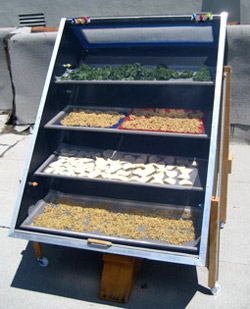“Who doesn’t love dried fruits and vegetables? There’s the extra sweetness and concentrated flavor.
They can be eaten “as is” or reconstituted with water. They’re lightweight—easy to carry to class, to work or even around the world.
And don’t forget their environmental friendliness: they can be stored nearly forever without refrigeration, they don’t need to be cooked to be enjoyed and, unlike so many other foods, they don’t come wrapped in excessive packaging (especially if you make them yourself).
Under the right conditions in the right climate, certain foods dehydrate naturally. But you can build your own food dehydrator to create favorable conditions wherever you are with the free plans below…”

